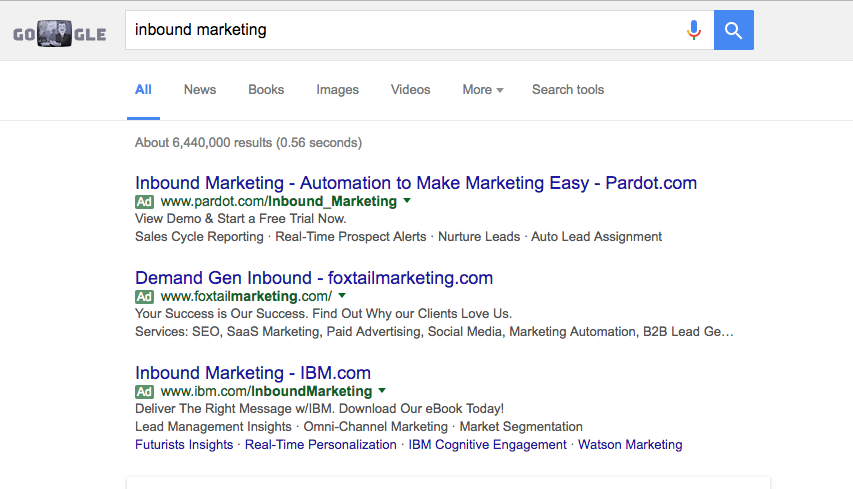5 Macro Threats Circling Your Inbound Marketing Strategy



Here at Nectafy, it’s that time of year. No, I’m not talking about holiday gift exchange planning or giving thanks in the form of turkey and baked goods. It’s the fourth quarter of 2016, and therefore time for a good, old-fashioned SWOT (strengths, weaknesses, opportunities, and threats) analysis.
The SWOT analysis—buzzwords aren’t our thing, but sometimes they just work—is a useful tool for mapping out the future of a small business like ours. By being proactive in examining the internal factors affecting our company (strengths and weaknesses) as well as external factors (opportunities and threats), we’re in a better position to address existing problems, navigate possible threats, and strategize about future goals.
Think about this: TV commercials aren’t what they used to be. Back in the day, traditional commercials were the cornerstone of advertising. Companies tried—and often succeeded—in influencing purchasing behavior with clever, perfectly scripted, 30-second ads.
Today, we hate commercials.
Thanks to DVRs, the internet, streaming services, social media, and more, people consume programming in different ways, making the classic TV commercial practically obsolete. A good SWOT analysis on the part of ad agencies would surely have seen this coming.
That begs the question: What if the same thing happens to inbound marketing?
So in their 2017 planning meeting, Lance, our president, and Henry, our marketing director, dove into Nectafy’s first-ever SWOT analysis. (I liken these two to our very own in-house SWAT team—sort of like James Bond, on a mission to size up potential threats.)
As part of the analysis, they looked at threats to the inbound marketing industry as a whole, which would clearly have a huge impact on the health of our inbound marketing business. Since we’re an open book, we thought we’d share with you some of the large-scale—hence, macro—forces that we see as possible threats to the industry.
Do you see the following five realities as having a potential impact on inbound?
5 Macro Threats To Inbound Marketing
Disclaimer: Keep in mind that we have no crystal ball here at Nectafy. These things could happen tomorrow, 20 years from now, or not at all. They are purely our own musings on the state of the industry and things we’re thinking about now.
1. Online browsers may be going the way of the dodo.
These days, people are using smartphone and tablet apps more and more frequently. Currently, mobile and tablet devices account for 51% of internet usage worldwide; and that number is projected to jump to 75% in 2017. That kind of behavior is inherently different than “Googling” something and landing on a website that has the best information. When you download an app, you do so because you really trust that information source or it solves a specific problem for you. In contrast, by using Google, you’re essentially asking for help in finding a solution. If people are moving more toward apps, how will they find content? Of course, there will always be a need for good content, but that may not be on a blog or through an internet browser.
2. The enemy of inbound may be… inbound?
Inbound has worked great for companies that do it well, but now there are so many people doing it that the effects have been watered down. For instance, searching the term “inbound marketing” brings up more than six million results! As we all know, it’s becoming harder and harder to stand out. What will happen when the effects of inbound marketing start to dwindle? Which leads me to my next point…
3. Just because you can do it doesn’t mean you can do it well.
The sheer number of people contributing to the inbound marketing pool is astounding, as the barrier for entry is so low. One example of that is HubSpot’s Partner Program. (As you probably already know, Nectafy is part of the Partner Program.) Supposedly HubSpot’s Partner Program helps agencies “market, sell & deliver the remarkable results your clients expect.” But where’s the proof of such remarkable skill? HubSpot had 2,050 partners as of July 2015, but it’s highly unlikely that every single one of them knows how to do inbound well. (And that number is probably well over 3,000 by now!) All that’s required is a certification test and a HubSpot purchase. And just like the age-old education debate, HubSpot’s test proves excellence in test-taking but may not truly measure mastery of inbound marketing in a meaningful way. The abundance of poor content then feeds into point #2, muddying the waters even further.
4. Recessions lurk around every corner.
Unfortunately, an economic recession is an ever-looming threat. Hopefully it won’t be a serious problem in the near future, but if it does happen, companies tend to cut marketing budgets first (before head count).
5. HubSpot may be wandering off the beaten path.
HubSpot invented the term inbound marketing—literally wrote the book on it. Lately, Lance has observed that the company seems to be directing a lot of resources toward its customer relationship management (CRM) software, which leads us to wonder about HubSpot’s future intentions. If the company decides to focus on sales software rather than marketing software, the marketing side could suffer due to a lack of investment and innovation. Such a loss would negatively impact everyone in the industry as well as an individual agency’s ability to get better at inbound.
And that’s where we’re at this SWOT season. Have you thought about the external threats to your own inbound marketing strategy? If so, let us know what you think we’re missing—or where we may have missed the mark. Leave us a comment below!


